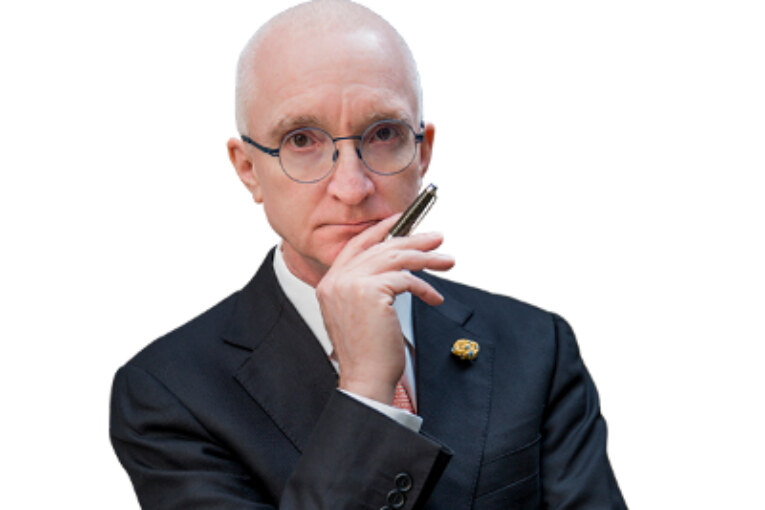
[ad_1]
Presenting the nine key digital building blocks for the circular economy
By Geoffrey Cann
Hand-me-downs
My first exposure to the circular economy did not inspire confidence.
My Mom, my brother and I were in the attic of my uncle’s home rummaging through an old trunk overloaded with castoff clothing that my cousins had outgrown. My uncle was a wealthy town lawyer with a big riverfront beach house and 3 kids. We were 8 in total, jammed into a 3 bedroom imposing but small stone cottage, trying to make do on the combined salaries of a supply teacher and an HVAC sales rep. Mac and cheese was a staple.
“Try these on, they look like they’ll fit”.
Mom was holding an oddly puffy shirt with exceptionally wide collars, four button cuffs, and a pattern that could only be called ‘test’. If I was going to get bullied at school, at least I’d be fashionable, in a previous decade kind of way.
I didn’t appreciate it at the time, but we were clearly poor, and with 6 kids, there simply wasn’t enough money to buy new clothes. One of our most hideous family photos has us kids kitted out in fabrics I am certain were recycled from bedroom curtains.
Necessity, or in my situation a mild case of poverty, teaches you to value your stuff, make your stuff last longer, use your stuff minimally to reduce wear and tear, and to repurpose your stuff at end of life.
Line Dancing
The hydrocarbon industry has never been particularly hip with circular thinking. In fact, the business model for the industry has been pretty much linear for my entire lifetime:
- Producer extracts the resource (crude oil, raw gas, dirty coal) and transforms it into something useful (fuels, energy, petrochemicals).
- The consumer uses it (burns it, wears it, builds with it, and lots of other uses), and disposes of it (carbon emissions into the atmosphere, construction materials into landfill, single use plastics everywhere) as waste.
There’s no evidence of a circle.
Regulators have imposed tons of compliance requirements to deal with the waste of the industry. But true circular thinking, where a molecule at the start of the value chain works its way through its terminal conclusion somewhere besides a landfill or as an emission or as garbage on the side of the road, has not really penetrated the sector. And for good reason:
- The producers, participating in global commodity markets, have every incentive to water down or oppose changes to the industry if those changes are not universally adopted. Otherwise those who adopt change may find themselves at an economic disadvantage relative to their less adaptive global competitors.
- There hasn’t been consensus on a market mechanism or price to stimulate the right behaviour more universally.
- There is no standard way to ‘do’ circular, which makes investment planning much harder.
- The individual customers in the cycle, such as a beverage company, have every incentive to differentiate their services and products made out of hydrocarbons. Recycling and reusing is harder when everything is unique.
- Consumers like me prefer the convenience and cleanliness of virgin materials over recycled. Changing the brand to ‘previously loved’ hasn’t helped.
- We haven’t had the capacity and the capability to cope with the enormous data volumes required to track relatively small aggregations of molecules (like a plastic bottle). Without the data, it’s very hard to take meaningful action to close the circle.
- The ability to accurately measure lifecycle events (change of state, change of ownership) at the level of granularity we need has eluded us.
- Some products, like petroleum fuel blends, are especially challenging to trace.
- Our normal approach to change, which is to first create a manual workaround, does not yield a trustworthy outcome, as demonstrated by Dieselgate (Volkswagen engineers manipulated data about the performance of its diesel engines to make them appear less harmful on the environment).
And so the industry has plodded along, slowly hazarding a change here, testing something out there.
Closing the Loop
But now the energy industry is being called upon to embrace the circular economy, and with good reason:
- Climate change is forcing a reckoning with the unsustainable linear model of extract, transform, consume, and dispose.
- The burden to adopt circular practices is becoming more global, leveling the playing field.
- Society demands more transparency about industry and about how personal choices impact the environment, and the ability to avoid detection is no longer a good strategy.
- Brands wish to avoid becoming entangled in sanctions imposed on bad state actors (Myanmar, Russia) who won’t play to the rules
- Young people want to be associated with brands that treat the environment and its resources more thoughtfully.
And if those weren’t compelling enough, regulators in major gilt-edged markets such as the EU are starting to impose new rules on industry that demand greater attention. There are real penalties now should a brand declare that its products meet global sustainability standards, or its fuel is green, but be unable to prove it.
It Can Be Done
There are now a handful of good examples in the industry of the circular economy finally coming to life:
Carbon capture and storage.
CCS is my favorite example from the world of emissions. CO2 captured at the flue stack of a natural gas fired power turbine (particularly one that is using pure methane) is exceptionally pure and free of contaminants. Separating the carbon from the oxygen yields a very pure form of carbon, which is ideal for many applications.
Plastics recycling.
Another groundbreaking effort comes from petrochemical giant SABIC. Through an initiative called TRUCIRCLE, SABIC aims to design products for recyclability, implement mechanical recycling programs, and certify specific products as circular. As one example, SABIC will track plastics inputs from Plastic Energy’s recycling process as they flow through SABIC’s polymers unit, and the delivery of the polymers to Intraplás for conversion into their packaging solutions. Marco from



